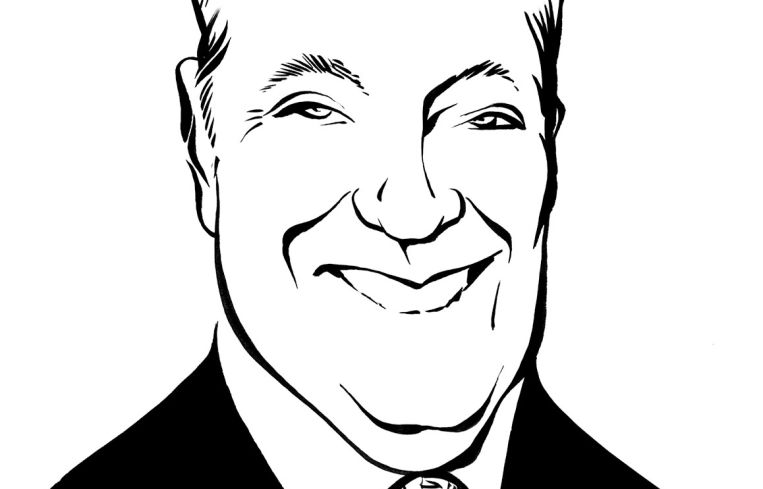JPMorgan Chase’s Al Brooks Gives His 2023 Midyear CRE Outlook
Multifamily, industrial and neighborhood retail are still going strong, but lingering market uncertainty could impact the Fed’s plan to curb inflation

Economic uncertainty remains high for commercial real estate through the rest of 2023. There are plenty of big questions, including the interest rate environment and the future of office space. But there are also positives: Multifamily and industrial continue to perform well, and the industry may have underestimated the strength of neighborhood retail.
Keep an eye on these commercial real estate trends and opportunities:
Macroeconomic forces impacting real estate
Geopolitical tensions, market volatility and high inflation will likely remain prominent in the second half of the year, as will other macroeconomic factors.
Market disruptions
Spurred by the recent disruption within the financial industry, economic uncertainty continues. However, JPMorgan Chase and the banking system remain strong. Backed by a fortress balance sheet and diversified deposit franchise, we have a long history of supporting clients through periods of market volatility, and continue to do so.
Interest rates
Between March 2023 and March 2023, the Fed raised interest rates nine consecutive times. Rates have risen at the fastest pace in decades, and it’s taking investors time to adjust. Many commercial real estate owners still pay rates lower than current levels, so refinancing activity has slowed. It’s unclear if rates will continue to rise or if the Fed will change course in the second half of the year. This leaves investors with a familiar feeling: uncertainty.
Commercial real estate trends across asset classes
While the future of the office is unclear, commercial real estate has remained resilient in the first half of 2023.
- Multifamily rental costs rising more slowly: Multifamily properties are still going strong. The national vacancy rate for multifamily was at 4.5 percent at the end of 2022, according to Moody’s Analytics, even as the rate of rent increases fell. Vacancy rates vary widely across metro areas, but the median vacancy rate nationwide is 3.9 percent as of April.
- Increasing affordable housing: The country’s affordable housing supply continues to lag far behind demand. A multipronged method to growing the housing supply is critical moving forward. Efforts may include finding creative ways to preserve, build and finance affordable housing — the primary focus of the firm’s Capital Solutions group — and working with public entities to create zoning variances that allow greater density in residential areas.
- The strength of retail: E-commerce accounts for roughly 15 percent of retail, but that doesn’t mean consumers can get everything online. There are still services that favor or even require in-person visits. For example, trips to the nail salon, barbershop and sports bar are still standard.
- Industrial may be stabilizing: Fueled by e-commerce and an everything-on-demand economy, industrial has been booming for years. While the asset class remains healthy, it may be starting to soften. The vacancy rate for distribution and warehouse space was 4.1 percent throughout the second half of 2022 — a record low, as the rate has steadily declined each quarter since the end of 2020. The rate rose 10 basis points in the first quarter of 2023 to 4.2 percent.
- Office space still up in the air: Remote and hybrid work have largely reduced demand for office space. Still, Class A properties are performing well. Office properties with leases of 10 years or more may be able to ride out the market correction. But Class B and C office buildings — especially those located with shorter leases outside prime locations — face challenges as the workplace evolves.
Opportunities in commercial real estate
Despite economic uncertainty, commercial real estate investors can capitalize on several opportunities in the coming months.
Agency lending
JPMorgan Chase is a licensed agency lender, offering affordable and market-rate multifamily financing through Fannie Mae and Freddie Mac. Our Agency Lending team will review options with multifamily property investors based on their goals, such as fixed-rate terms of 10 years and longer on a 30-year amortization loan.
Innovative proptech
Our 2023 Business Leaders Outlook: Commercial Real Estate highlighted the top issues driving up costs for the industry. Among them: the increased cost for energy, labor and raw materials, plus snarled supply chains. Proptech, including digital marketing and smart buildings tools, can help commercial real estate owners and investors reduce inefficiencies to cut costs.
Rent payment technology
For years, many property owners and operators relied on manual, paper-based payment processes for rent. These processes can be time-consuming and leave businesses vulnerable to fraud. Digital rent payment solutions can help property managers streamline operations and meet residents’ needs.
Amid market uncertainty, the threat of a U.S. debt default could further complicate the outlook for multifamily real estate.
Register now to join the JPMorgan Chase Commercial real Estate Midyear Outlook on June 1.
Al Brooks is head of commercial real estate, commercial banking at JPMorgan Chase


